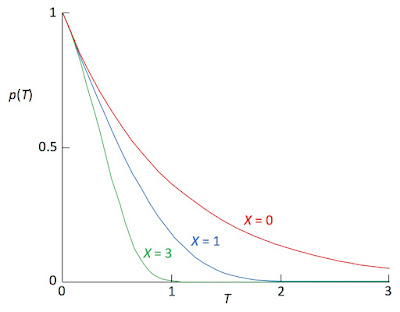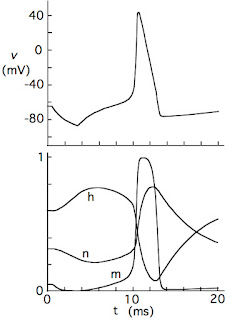Jim performed his PhD research with Prof. Fred Hetzel, and graduated with his PhD in 1987. His dissertation described an in vivo experimental investigation on the interaction between photodynamic therapy and hyperthermia. A copy of his dissertation sits in our Physics Department office, and I often show it to prospective students because it is the thickest dissertation on the shelf, over 480 pages. Hetzel, Norm Tepley, Michael Chopp, and Abe Liboff formed the dissertation committee (I didn’t arrive at OU until ten years later). Three journal articles resulting from this work are:
Mattiello J, Hetzel FW (1986) Hematoporphyrin-derivative optical-fluorescence-detection instrument for localization of bladder and bronchous carcinoma in situ. Review of Scientific Instruments 57:2339–2342.
Mattiello J, Hetzel F, Vandenheede L (1987) Intratumor temperature measurements during photodynamic theorapy. Photochemistry and Photobiology 46:873–879.
Mattiello J, Evelhoch JL, Brown E, Schaap AP, Hetzel FW (1990) Effect of photodynamic therapy on RIF-1 tumor metabolism and blood flow examined by 31P and 2H NMR spectroscopy. NMR in Biomedicine 3:64–70.A news article about Jim’s research appeared in the Spring 1984 issue of The Oakland University Magazine (above right).
After graduation, Jim obtained a fellowship to work at the intramural program of the National Institutes of Health in Bethesda, Maryland, where I first met him. Below I quote from an NIH oral history interview with Peter Basser, which describes how Basser, Denis LeBihan, and Jim developed Diffusion Tensor Imaging in the early 1990s.
Well actually this was an amazing story too, because there’s so many people involved and activities that had to be done in order to bring this from bench to bedside. So the first thing is Denis and I started corresponding, and Jim Mattiello then, who was working with Denis and who was also working in our program [Biomedical Engineering and Instrumentation Program], was a little frustrated with some of the projects he was working on and decided that he wanted to start working with us. So I was excited about that because Jim had a technical background in MRI, he had been working in the area for a few–maybe a year and a half at that point, and he would provide a lot of experimental help which I really couldn’t provide because my knowledge at that point of the NMRI [Nuclear Magnetic Resonance Imaging] hardware and sequences and things was almost nonexistent. And so we started doing diffusion experiments with water. The first thing that we – in pork loin – the first thing that we started doing was – Denis got us some magnetic time down at the NMRI center and we started to – since we had this mathematical framework that related the signal that we measured to the diffusion tensor the first thing that you want to do is show that the diffusion tensor in water is an isotropic tensor, which means that if you look at the diffusion process along any direction that it appears the same and that has a characteristic – a special form when you write it as a tensor and it’s something that if you can’t do that you can’t look at other materials that are more complex.I can remember the morning when Peter came in to NIH carrying a pork loin from a local grocery store. I asked him why he brought a chunk of raw meat to work, and he told me that he and Jim were going to use it that day in their first DTI experiment on muscle. Later in the oral history interview, Basser describes this experiment.
We wrote our first abstract describing it [Anisotropic Diffusion Tensor Imaging] at the ISMRM [International Society for Magnetic Resonance in Medicine Conference] I think which we presented in Berlin in 1992, we looked at a sample of pork loin and we showed that we first measured the diffusion tensor for a large region of that pork loin specimen, and then we actually physically rotated that – Jim Mattiello actually physically rotated the pork loin specimen in the magnet. We repeated the experiments, calculated the tensor and we were able to show that the directions that we calculated for the pork loin muscles followed the direction of the rotation that he had applied physically on that sample, so that we were measuring something intrinsic to the tissue. These principle directions that we were able to extract from the diffusion tensor were fundamental to the tissue architecture and were independent of the coordinate system that we made the measurement in, which was really, I think, a very important demonstration then.Jim is a coauthor on two classic papers about DTI that are widely cited in the medical literature.
Basser PJ, Mattiello J, LeBihan D (1994) MR Diffusion Tensor Spectroscopy and Imaging. Biophysical Journal 66:259–267. (4495 citations in Google Scholar as of 9-23-2017)I know many scientists who have had long and successful careers, but few of them can claim they contributed to a paper with over 4000 citations, a significant achievement (that averages to one citation every other day for over two decades). My most cited article, published about the same time, has only 500 citations, and I consider myself to be a successful scientist. Jim was also the lead author on two related papers.
Basser PJ, Mattiello J, LeBihan D (1994) Estimation of the Effective Self-Diffusion Tensor From the NMR Spin Echo. Journal of Magnetic Resonance B 103:247–254. (3261 citations)
Mattiello J, Basser PJ, LeBihan D (1994) Analytical Expressions for the B Matrix in NMR Diffusion Imaging and Spectroscopy. Journal of Magnetic Resonance A, 108:131–141. (224 citations)In addition, Jim is listed as an inventor on a key patent for DTI.
Mattiello J, Basser PJ, LeBihan D (1997) The B Matrix in Diffusion Tensor Echo-Planar Imaging. Magnetic Resonance in Medicine 37:292–300. (227 citations)
Basser PJ, Mattiello JH, LeBihan D. Method and System for Measuring the Diffusion Tensor and for Diffusion Tensor Imaging. US Patent 5,539,310.Russ Hobbie and I cite the 1994 Biophysical Journal paper and the 1994 Journal of Magnetic Resonance A paper in Intermediate Physics for Medicine and Biology. Our Figure 18.40 is based in part on the pulse sequence he helped developed for DTI. Nowadays Diffusion Tensor Imaging is used to make beautiful maps of fiber tracts in the brain.
Jim spent the later part of his career teaching physics at St. Clair County Community College in Port Huron, Michigan. I last saw him when he returned to Oakland University in 2002 to give a physics colloquium about DTI.
James Mattiello’s contributions to magnetic resonance imaging, and specifically to diffusion tensor imaging, have had a lasting impact on the field of medical physics. He will be missed.











